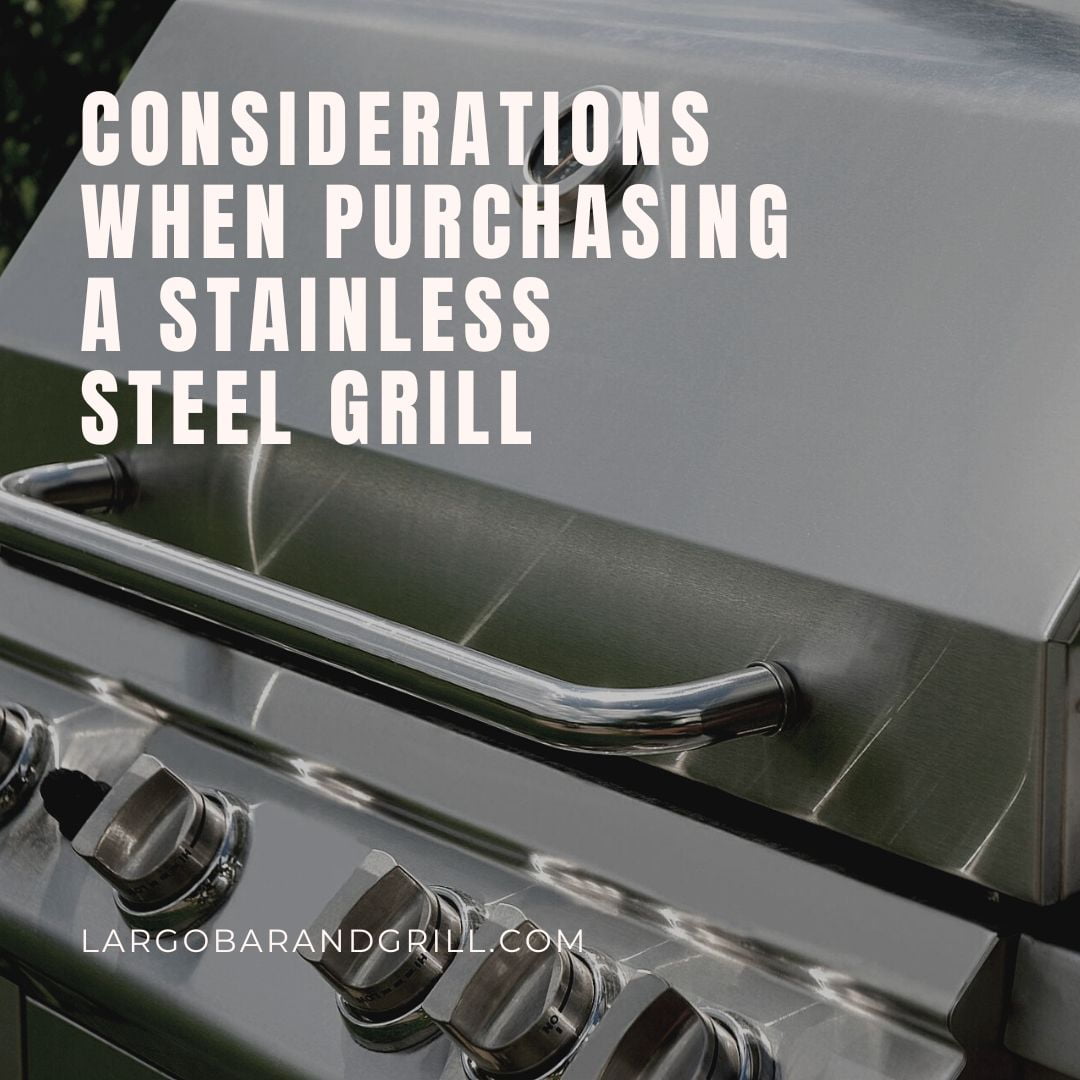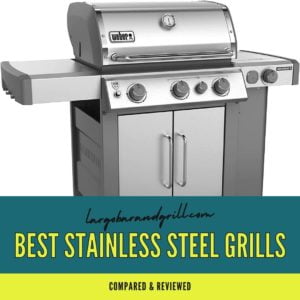Disclaimer: There are affiliate links in this post. At no cost to you, I get commissions for purchases made through links in this post.
When shopping for a new grill to meet your barbecuing needs, there are numerous aspects to consider, including size, fuel type, and convenience of use. Once you have narrowed your search to stainless steel gas grills, many alternatives are still available.
Stainless steel is one of those expressions that consistently leads to confusion. What makes stainless steel exceptional is neither the steel nor the stainless. Over time, stainless steel can rust, tarnish, and lose its shine and beauty. Each variety of stainless steel has distinctive characteristics. Before heading to the store or browsing many websites, knowing what to look for is beneficial. By examining the steel’s grade, thickness, and finish, you can select a well-constructed grill that meets your needs.
Stainless Steel Grades
Multiple grades of metal may be used to construct a stainless-steel grill, and the body’s metal may differ from some of its pieces. Higher grade steel will last longer and corrode less quickly, but it will cost more.
304 stainless steel is regarded to be of commercial quality. It is nonmagnetic and well regarded for its corrosion resistance. 304 is utilized exclusively in the most expensive grills but is also used for parts in other steel grills.
Grade 443 is a relatively recent form of steel that is becoming more prevalent in inexpensive grills. It is magnetic due to its increased chromium and titanium content. Nevertheless, this combination renders steel nearly as durable and rust resistant as 304.
Grade 430 stainless steel is commonly used in inexpensive grills, with the cheapest employing a particularly thin variant. It is magnetic, and its iron content renders it susceptible to corrosion and stress fractures. To maintain their luster, these grills must often be polished.
Years ago, it was recommended to use a magnet to determine the grade of stainless steel. The notion was that a magnet would adhere to 430 but not 304. Therefore, it would be easy to decide which grade was used to construct a grill and its components. This test has become erroneous since the introduction of the magnetic 443 grade. However, because it is a quality indicator, manufacturers will usually specify if a grill is constructed of grade 304 or 443.
Stainless Steel Thickness
Thicker metal is superior and discolors less rapidly than thinner stainless steel. You do not require calipers to purchase a gas barbecue. Instead, the thickness of the metal can be determined by the grill’s overall weight and the metal hardness. Compare the weight of several grills of comparable size; the lighter ones are presumably made with thinner steel. Do not fear pressing the grill in the center of the hood. If it does not move, the metal is likely quite thick.
Stainless Steel Finishes
Most of the rust begins at metal’s surface flaws. Moisture and chemicals can corrode metal through the presence of microscopic holes. Although corrosion-resistant, stainless steel is not immune to these issues. Feel the surface of a gas grill before purchasing one. Whether the steel has a brushed or smooth finish, it should feel smooth, pit-free, and uniform. Poor-quality stainless steel will feel uneven since the metal is unfinished when it leaves the manufacturer.
Assembly of the Parts
A correctly built stainless steel grill maximizes the rust resistance of the metal. Spot welding, which involves combining metal components with microscopic welds, renders the joints susceptible to corrosion. The greatest stainless-steel grills are made with continuous welding, a costly technique not available on lower-end grills. Instead of welding, grills may instead be built with bolts or even rivets.
Look for grill components that are either welded together or secured with stainless steel fasteners. The ideal bolts are made of 304 (or 316) stainless steel and are not magnetic. Avoid grills built with materials other than stainless steel bolts, as these will corrode rapidly. Pop rivets are generally undesirable, and it is recommended to avoid grills with rivets.
Maintenance
If you acquire a stainless-steel gas grill, you must maintain it. Please keep it clean and protected, and refrain from spraying chemicals in its vicinity. Lawn fertilizers are corrosive substances that can destroy even the most durable gas grills. Your new grill, with little upkeep, should provide you and your loved ones with years of excellent BBQ.
Related Posts
Best Stainless Steel Grills – Compared & Reviewed
Disclaimer: There are affiliate links in this post. At no...
Read MoreHow To Choose the Best Electric Grills for your kitchen
Disclaimer: There are affiliate links in this post. At no...
Read MoreHow To Select The Best Griddle For Your Gas Grill
Disclaimer: There are affiliate links in this post. At no...
Read MoreWhy Trust Us
You will find what you are looking for at Largo Bar and Grill. From classic to luxury brands, you'll find both. We will help you to select appliances that fit your needs, budget and lifestyle. Whether you want to stop by to learn more — or plan to make a major purchase — we’ll treat you like family and assist you every step of the way. Shop with us today to receive friendly and experienced help along the way.




